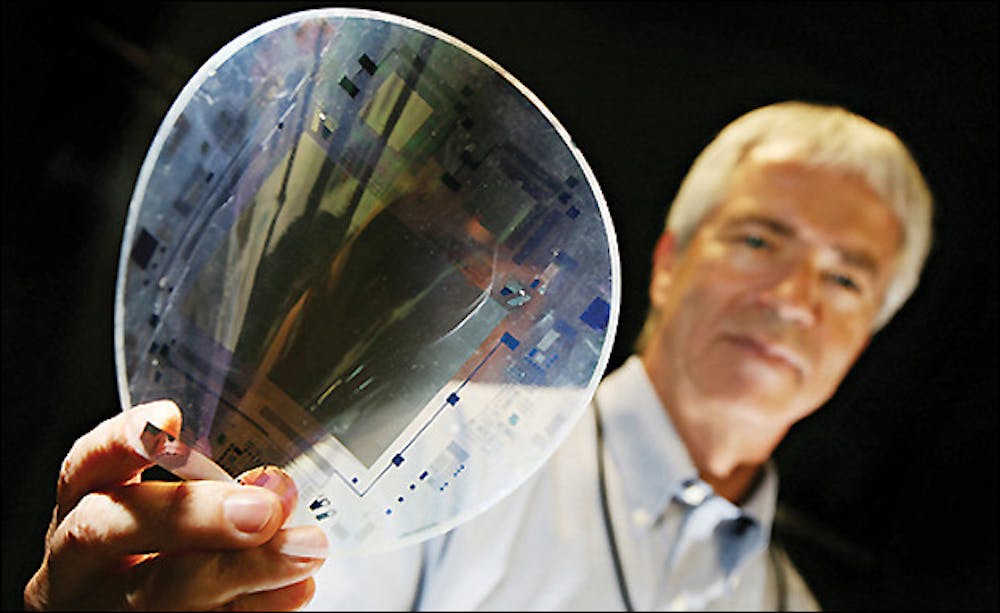Computer, cell phone and television displays may soon become as pliable as pieces of paper.
Laptops, IDs and readable books are not far from being able to roll up, bend forward, bend backward, all without distortion or ruining the image.
ASU researchers, led by Gregory Raupp, associate vice president of research at the Flexible Display Center, have been developing over the past five years a method for creating bendable displays.
Researchers at the center, at the ASU Research Park, along with 21 industry partners and a $44 million investment by the U.S. Army, have been working to develop technology that could literally change the way we view our electronic devices.
The technology abandons the constraints of glass displays and allows images to become pliable on sheets of plastic and steel.
Raupp displayed the flexibility on one of the plastic displays by rolling it forward and backward in his hands, while the image remained solid.
An image roughly the size of an ASU Sun Card is made up of 80,000 individual pixels, Raupp said.
“An inconsistency in one pixel is almost immediately detectable by the human eye,” he said.
The image, while still only black and white, is created through an array of transistors placed atop a piece of highly engineered plastic or steel.
Raupp said the new technology might come sooner rather than later when companies begin to market the flexible display.
“We are roughly a year away from when I should be able to buy displays like this,” Raupp said, referring to the black and white models. Color displays are more likely to appear in 2010 or 2011, he said.
The transistors release varying charges causing microspheres of black and white to go up or down within the display, Raupp said.
Using this method, sixteen shades of gray, along with black and white, are produced to create an image the eye recognizes, he said.
This type of display is called a reflective display, using light bounced from the back of the plastic or steel to light up the image — making it ideal for outdoor use.
Common image displays are LCDs, which use a backlight to illuminate a liquid crystal display and are most commonly seen in laptops, TVs and cell phones.
LCD technology works well inside but is harder to use outdoors, because of its weight and reaction to direct sunlight.
And a flexible display offers design freedom, Raupp said.
“What I’m really saying is display on any surface is possible,” Raupp said.
While Raupp and his team aren’t in charge of product design, he said several products might benefit from a pliable plastic display.
“I see great opportunities for any human portable device where reducing size and weight and power required will provide a benefit or attraction to a potential buyer,” Raupp said.
Reach the reporter at deanna.dent@asu.edu




